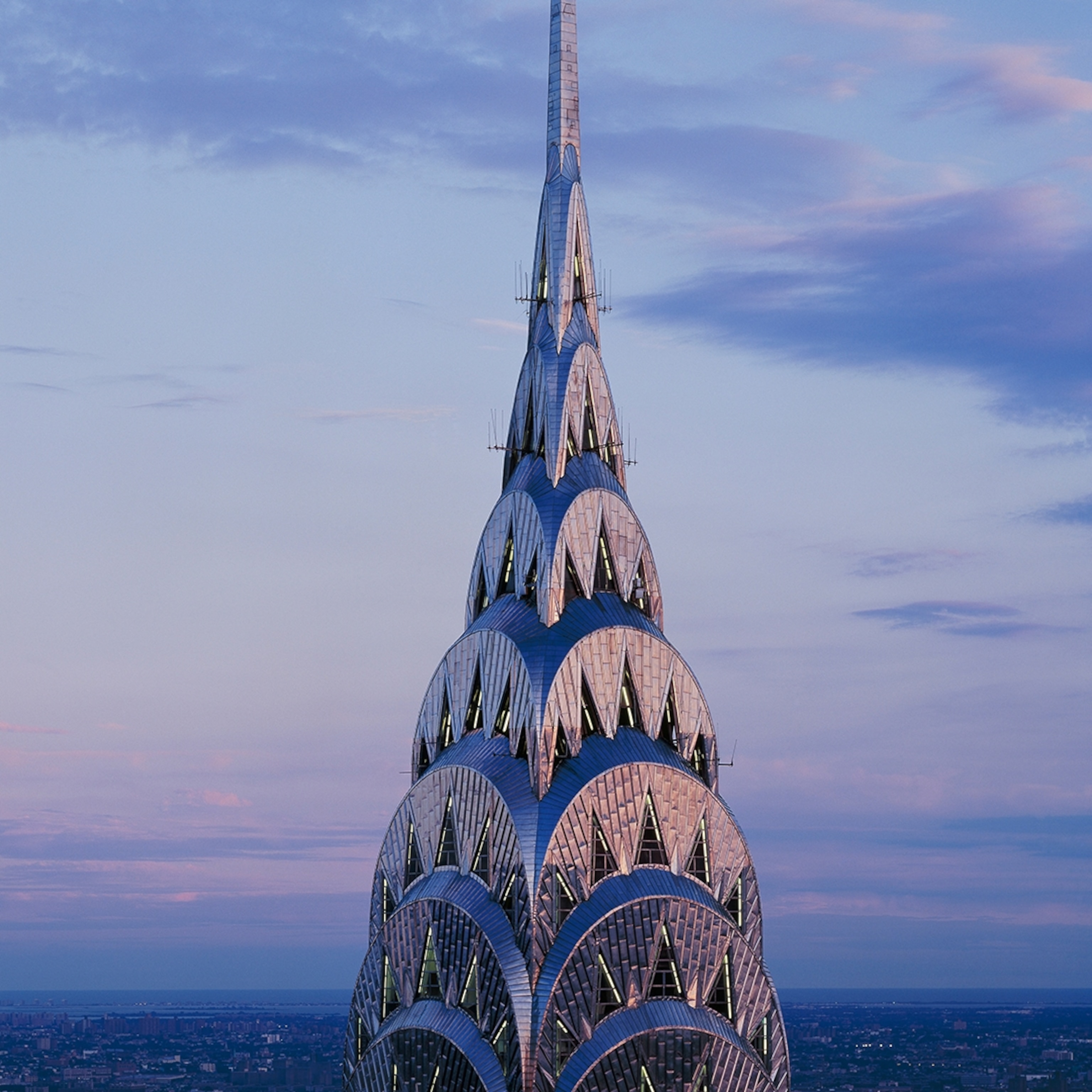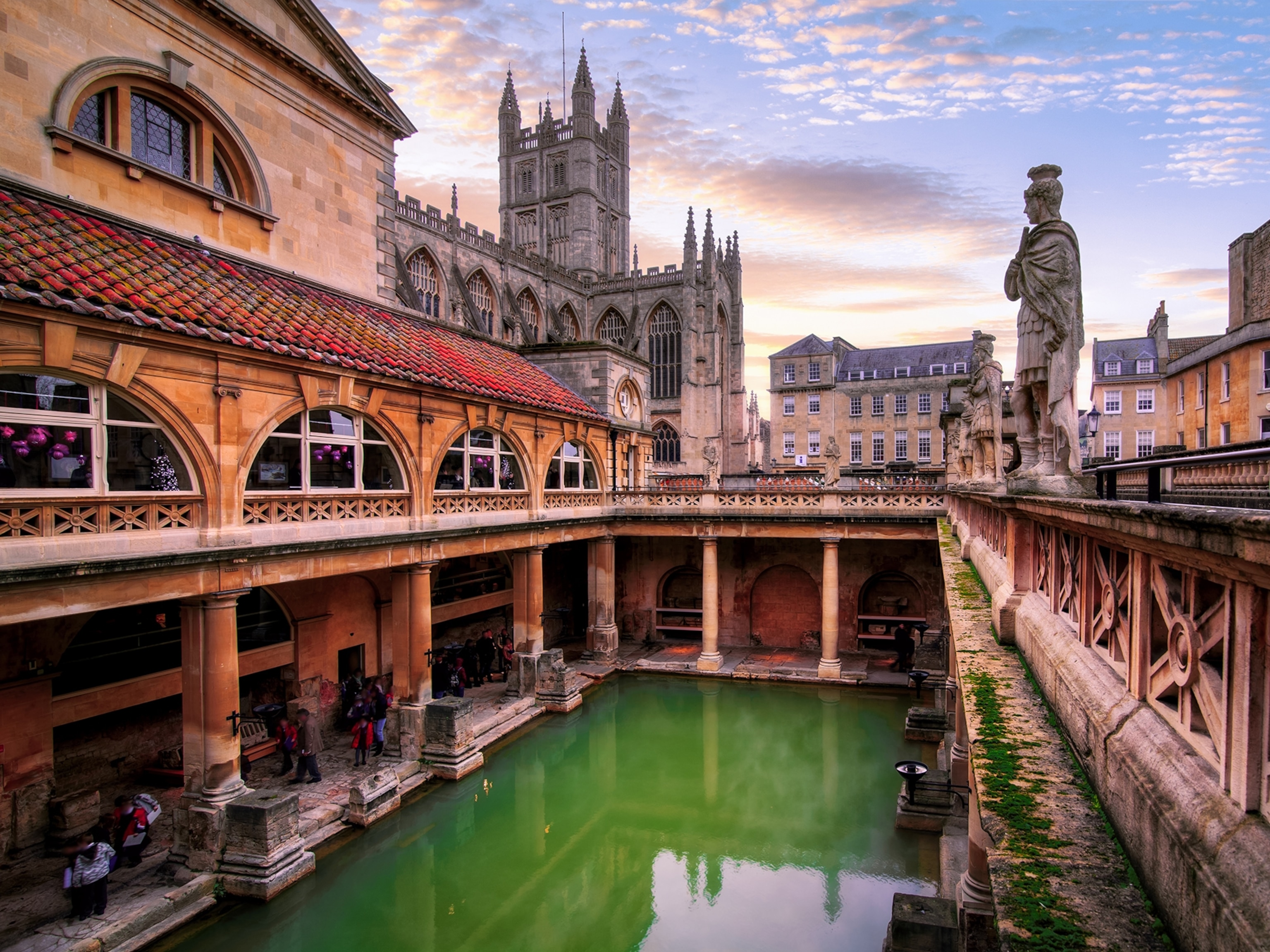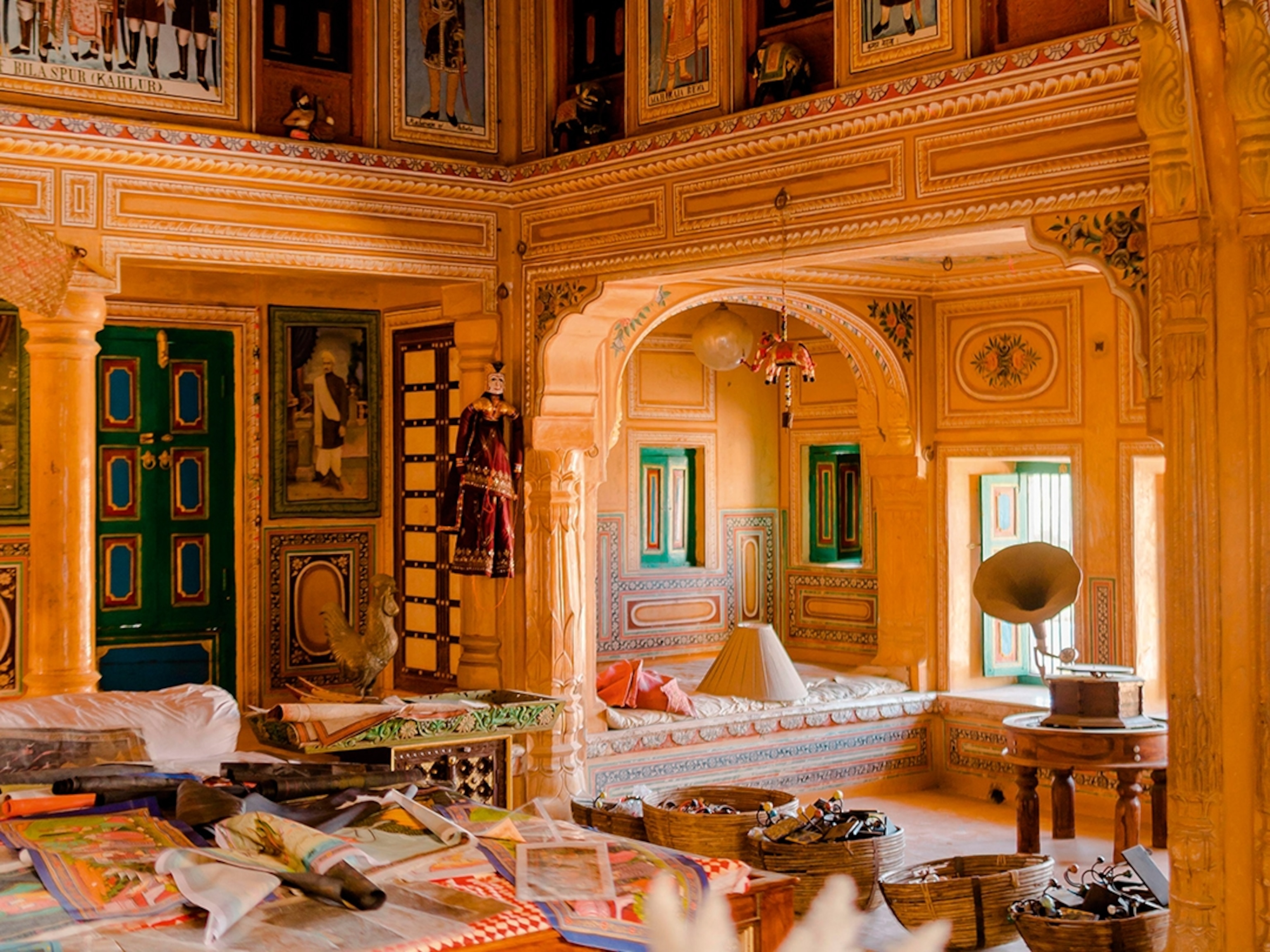Why this coastal town should be on every Morocco itinerary
Centuries of cultural exchange have made this Moroccan city a haven for lovers of food, music and design. Let its winds blow you coastward, where a deep-rooted arts scene gives way to legendary surf.
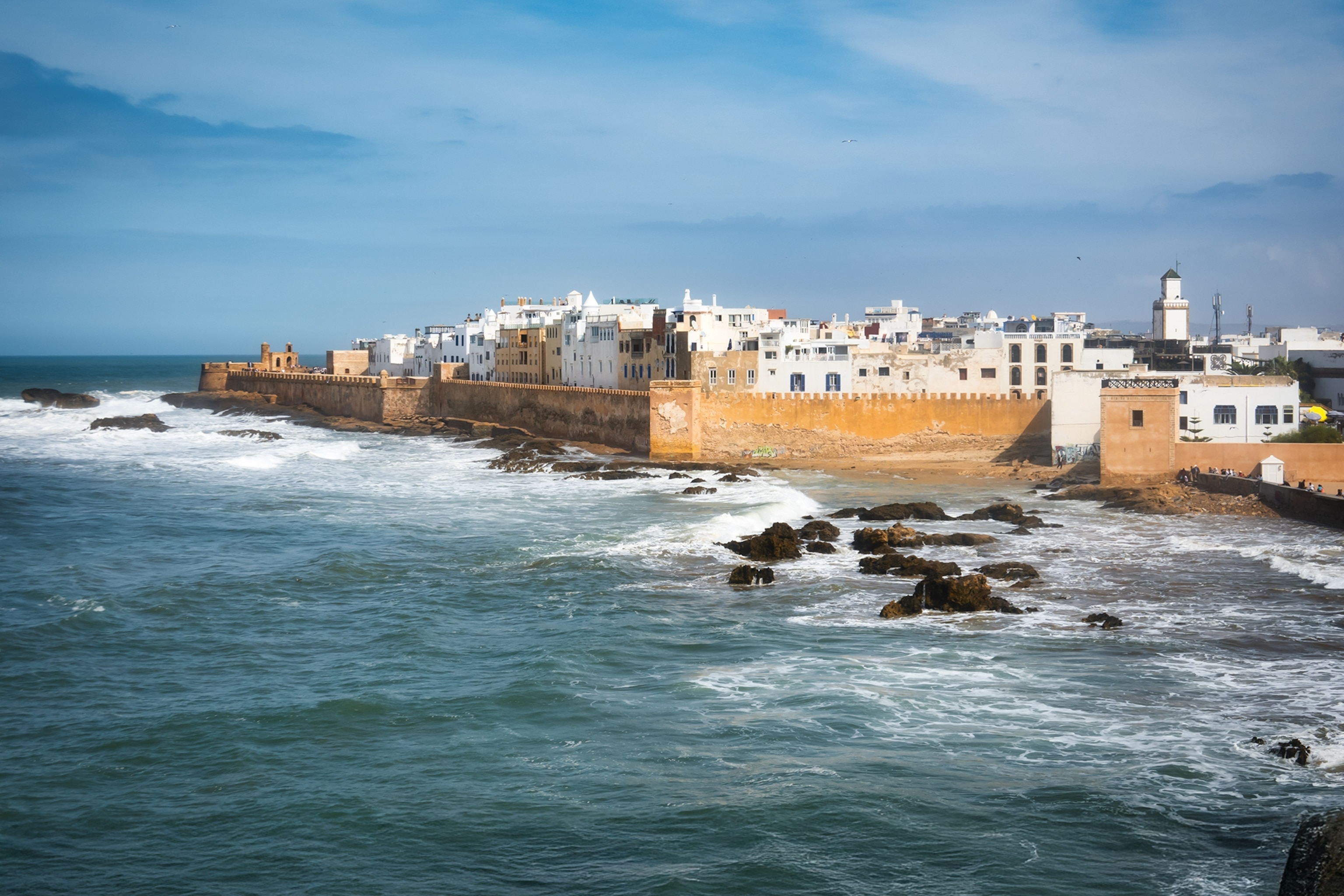
According to local lore, when Jimi Hendrix visited Essaouira in July 1969, he was so taken with the Moroccan port city that he tried to buy the neighbouring village of Diabat. How much of that’s true has been lost behind a veil of purple haze, but Essaouira’s bohemian spirit lives on, attracting travellers keen to soak up the creative energy and laid-back atmosphere that made Morocco a key stop on the hippy trail of the 1960s and 1970s.
Hippies weren’t the only ones to feel Essaouira’s pull. Over the centuries, the city’s famed Atlantic breezes have blown in French, Portuguese, Spanish and even British influences, which have blended with Arabic and Amazigh traditions to establish the windswept citadel as a centre for Moroccan art and design.
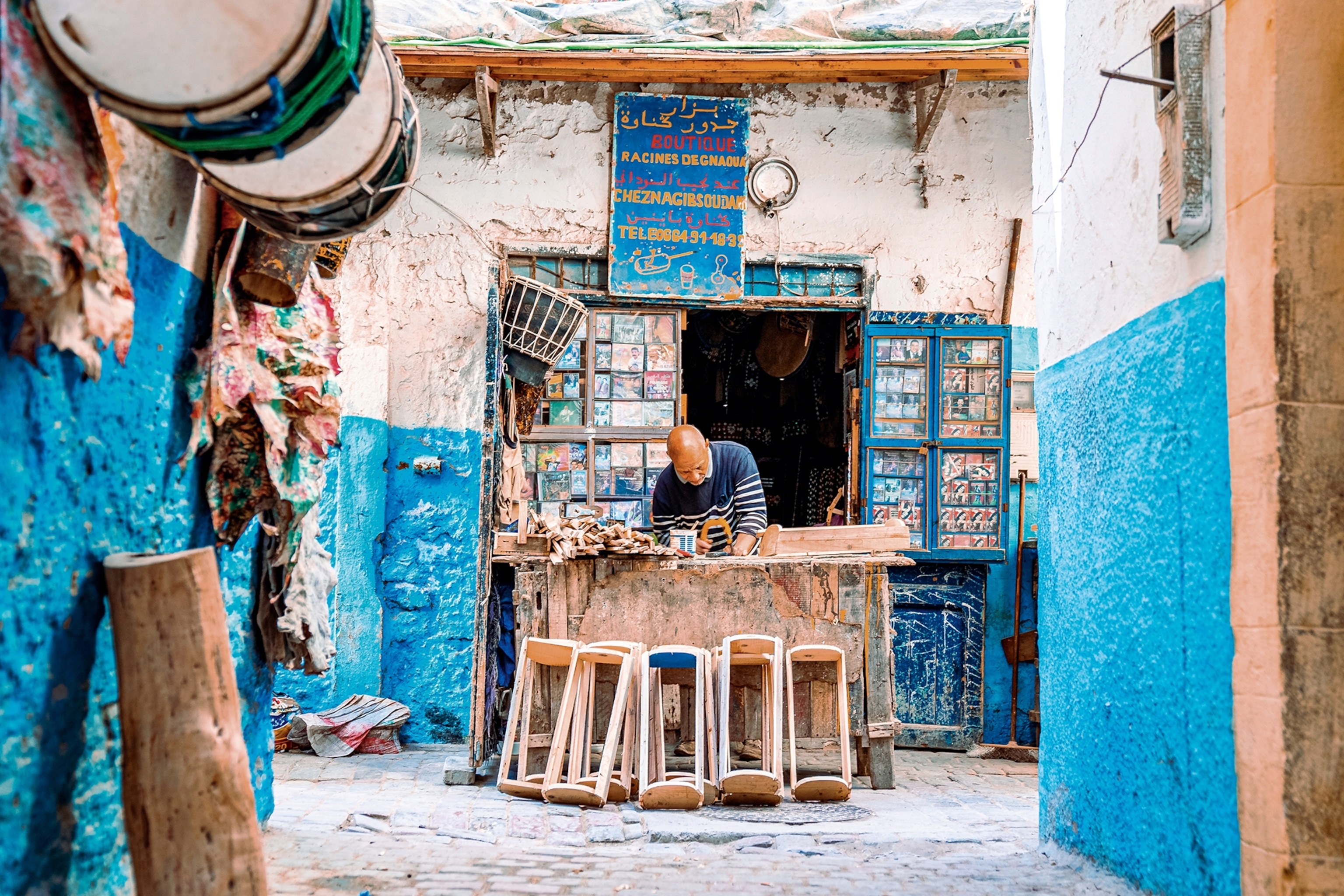
Today, Essaouira moves to the beat of its own drum — one rattled by the rhythms of Gnawa, a traditional music originally practised by people brought together by the trans-Saharan slave trade. For three days every June, the sound of strummed lutes, rhythmic castanets and hypnotic vocals fills the streets during the Gnaoua and World Music Festival. Like the five towering gates, or babs, that open onto the city’s medina, these spiritual rhythms may seem like portals into Morocco’s past, but Essaouira has a modern side, too. Wander its souk-filled avenues and you’ll find contemporary boutiques, artisan patisseries and co-working spaces where nomadic creatives continue to chase that countercultural lifestyle.
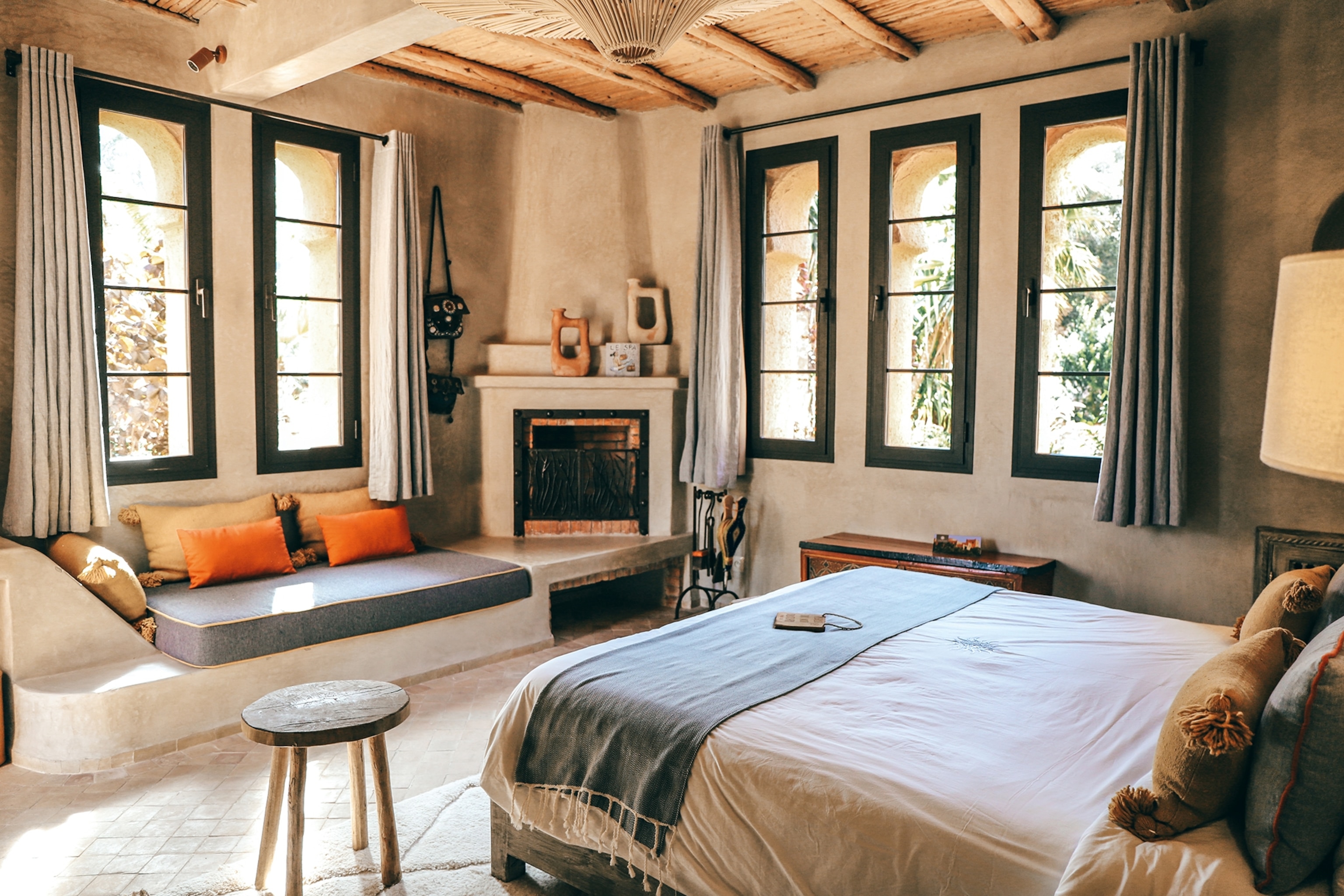
Day 1: Cultural kicks
Morning
Essaouira’s medina follows a rough grid system, making the UNESCO-listed old quarter easily navigable on foot. Head down Rue Skala towards Bayt Dakira, a local history museum that houses sacred texts and other artefacts from the city’s once sizeable Jewish population. Then take your time exploring the medina’s main thoroughfares— twin strands running north to south — where shop owners sell ceramics, ornate wood carvings and jewellery studded with precious stones. Along the way, stop by Chaim Pinto Synagogue, a 19th-century riad-turned-place of worship, before trying the city’s most popular snack at Crêpes Essaouira, a crepe stall near the main square, Place Moulay Hassan.
Afternoon
For a window into Morrocan cuisine and its influences, head to l’Atelier. Occupying a former almond warehouse on the medina’s outer edge, this cafe and concept store runs cooking workshops every day except Sunday. You’ll explore the historic core’s various markets, sourcing ingredients and learning the names of aromatic spices, before returning to cook a traditional meal. The menu’s largely dictated by what’s fresh in the harbour and souks, but expect to enjoy starters such as zaalouk (aubergine and tomato dip) followed by more regional dishes like sardine meatball tagine (known as souiri). For those with a sweet tooth, there’s also a pastry and mint tea masterclass.
Evening
Head deeper into the medina to get a flavour of the local arts and design scene. Stop by Le Real Mogador, a sprawling mansion whose rotating exhibition of contemporary Moroccan works is set around a tranquil inner courtyard. Gallery Kasbah is well worth seeing, too. Filled to the brim with sculptures, carpets and paintings, this renovated 18th-century riad showcases an eclectic mix of local art. For dinner, book a table at neighbouring Dar Baba, a candle-lit space serving Moroccan-Mediterranean dishes, then end the night by joining the bohemian clientele at D’Jazy’s for cocktails and live fusion jazz.
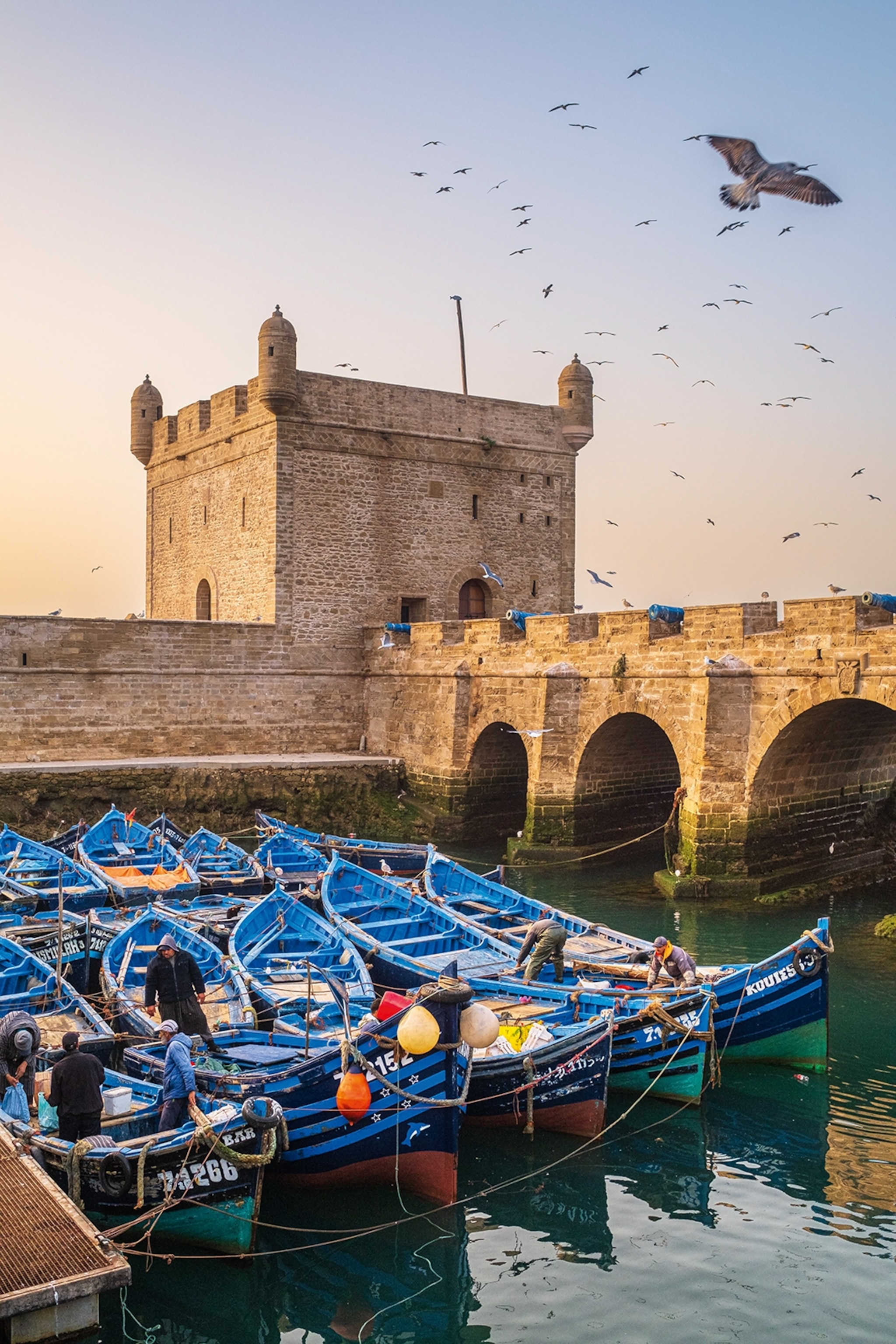
Day 2: Active adventures
Morning
Prepare for the day with a cinnamon bun from Pumpkin, an artisanal patisserie on Avenue de l’Istiqlal, the medina’s main drag. Then, embrace the wind with a walk along Skala de la Ville. Designed by French architect Theodore Cornut, the city’s ramparts — aided by 19 bronze cannons shipped in from Spain — protected it from invaders and unforgiving Atlantic waves. Wander towards Skala du Port as the fishing boats return with the day’s catch. Originally a small trading port, Essaouira’s harbour once handled as much as half of Morocco’s foreign trade. While you’re here, don’t miss out on fresh sardines cooked over hot coals on ‘grill street’, a row of stalls on the water’s edge.
Afternoon
Year-round winds have made Essaouira a top surfing and kitesurfing destination since the 1960s. Walk south from the harbour towards Essaouira’s main beach, where Ion Club offers equipment rental, windsurfing and kitesurfing lessons, and even wingfoil courses, during which learners skim the water clutching hydrofoil sails. Summer’s smaller waves are better for beginners, while more experienced surfers may want to face the large winter swells. Those who’d rather watch the action from the shore will find several beach clubs and restaurants along the promenade. Beach and Friends has sunbeds, parasols and a restaurant serving local seafood and classic cocktails.
Evening
Morocco’s Atlantic coast enjoys breathtaking sunsets. As the sky grows pink, head to Palma Quad on Essaouira Beach for the final adventure of the day: a guided quad-biking tour out of the city. After a short test drive, you’ll spend a couple of hours riding on tracks surrounded by desert shrubbery to seemingly forgotten sections of Essaouira’s coastline, watching the sky turn a blazing orange. Return to the medina for dinner beneath the exposed brick arches of Triskala, a farm-to-fork restaurant occupying one of the oldest houses in Essaouira. The menu changes daily, but expect to feast on fragrant seafood tagines, and be sure to order the fennel bread to mop up the juices.
How to do it:
A peaceful oasis just a 10-minute drive from Essaouira’s medina, Le Jardin des Douars has terraced gardens and comfortable rooms and suites, many with private terraces. From 7,904 MAD (£160), B&B.
For more information visit: visitessaouira.com
This story was created with the support of Les Jardin des Douars.
To subscribe to National Geographic Traveller (UK) magazine click here. (Available in select countries only).

